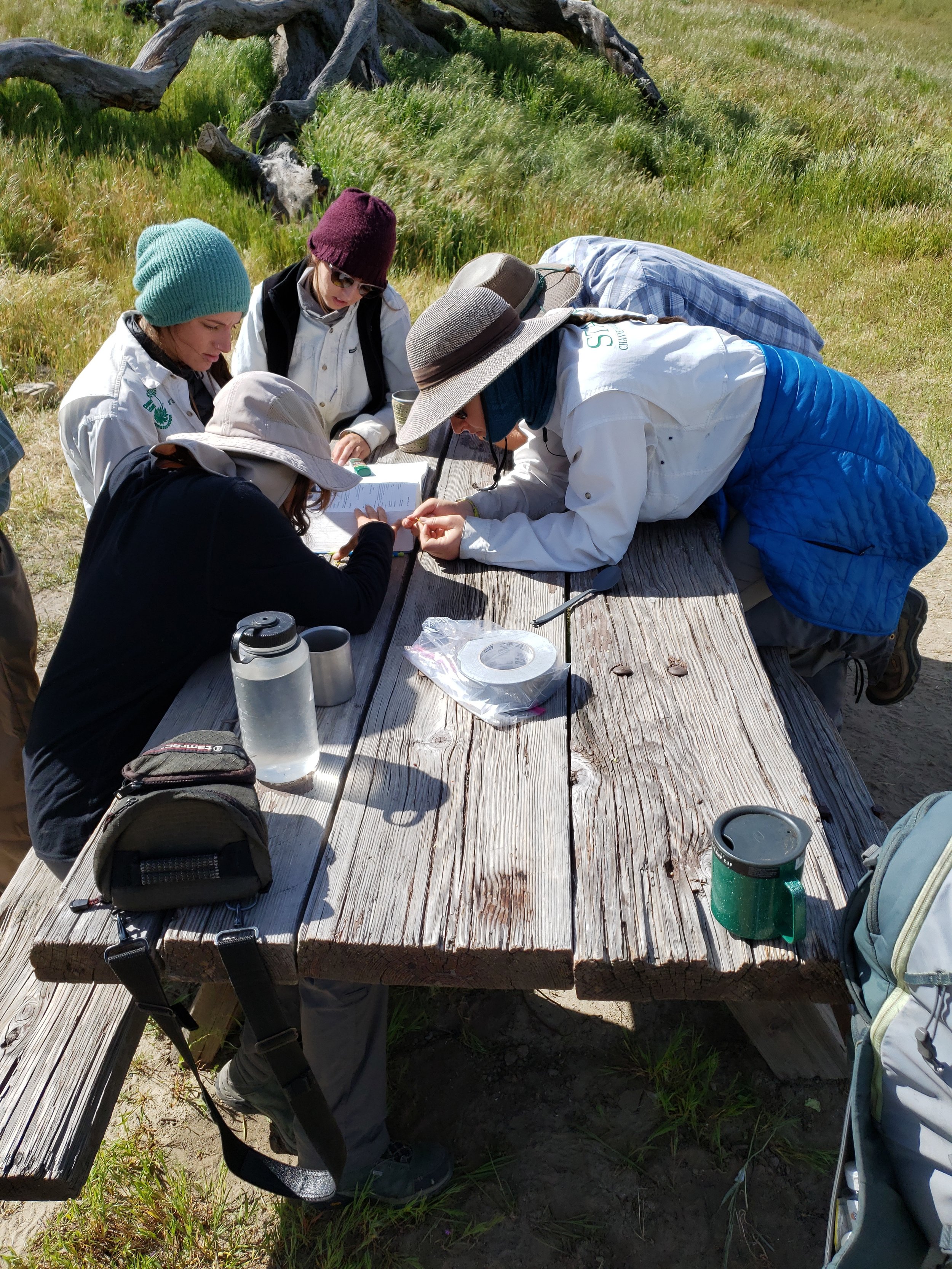Did you know Channel Islands Restoration not only does habitat restoration, but also conducts research to best inform the where, what, and how of habitat restoration? This past spring we set out to do a biological inventory of the Sierra Madre Potreros - a unique set of open grasslands set along the Sierra Madre Ridge - to determine if habitat restoration is necessary and how it would best be done.
The Sierra Madre Potreros are located in northeastern Santa Barbara County, California, about 30 miles north of Santa Barbara as the condor flies (or about 100 miles as the backpacker trudges) and approximately 10 miles south of New Cuyama. The potreros are situated atop the ridge of the Sierra Madre Mountains in the Los Padres National Forest, San Rafael Wilderness. The potreros support more than 1,500 acres of grasslands. (“Potreros” means an enclosed piece of pasture land, coming from the Spanish word “potro,” meaning a male horse.) These potreros include Santa Barbara Potrero, Logan Potrero, Round Potrero, Salisbury Potrero, Pine Corral Potrero, Montgomery Potrero, and others. The potreros are on the edge of the Zaca Fire scar that burned more than 240,000 acres between July 4 and October 29, 2007.
Channel Islands Restoration recently completed a biological study of the plants and animals in the potreros in order to establish a baseline inventory. Having this knowledge helped us form preliminary recommendations for ecological restoration in the future. The study was funded by the National Fish and Wildlife Foundation, working in close cooperation with the Los Padres National Forest through the Southern California Forests and Watersheds – Wildfires Restoration Grant Program. The major goals of this competitive grant program are to:
- Increase the pace and scale of restoration to address impacts from the Zaca and other fires;
- Provide sustainable and lasting ecological benefits to the forest;
- Engage in efficient, strategic, and innovative solutions to improve forest health and resilience;
- Encourage ‘shared-stewardship’ of Forest Service lands through expanded partnership and cooperation. We conducted an analysis of recent and historic aerial photography and found that the aerial extent of the grasslands has been stable over the past 80 years, with no noticeable change in the extent. Any changes in the species composition cannot be determined by viewing aerial photography.
The field crew gathers to identify a rare plant.
We surveyed approximately 1,285 acres of grasslands in the potreros this spring and found that they are dominated by non-native annual grasses but there are many species of native grasses and wildflowers growing there as well. In fact we found seven species of native grasses and more than 100 species of plants. In some of the potreros, 80 percent of these are native. While there are more natives than non-natives, the non-natives dominate the landscape and take up most of the space. Nevertheless, the presence of so many natives is encouraging. We were delighted to observe three rare plant species in flower but we were disappointed to observe nine invasive plant species, including hundreds of thousands of the invasive grass, Medusa head (Elymus caput-medusae).
On the Potreros, we observed more than fifty invertebrate species, two amphibian species, eight species of reptile (including a number of rattlesnakes), fifty species of birds, and at least eight mammal species. Future surveys during other seasons are expected to result in additional observations.
Michael Mulroy and Brad Meiners set up to identify bird species at dawn.
Our report includes preliminary recommendations for next steps. These include beginning to tackle the invasive weeds. We’ve submitted a grant proposal to start controlling some of the non-native weeds and hope that we will be successful. If you can help, either financially or physically, please let us know. We’re going to need it!



